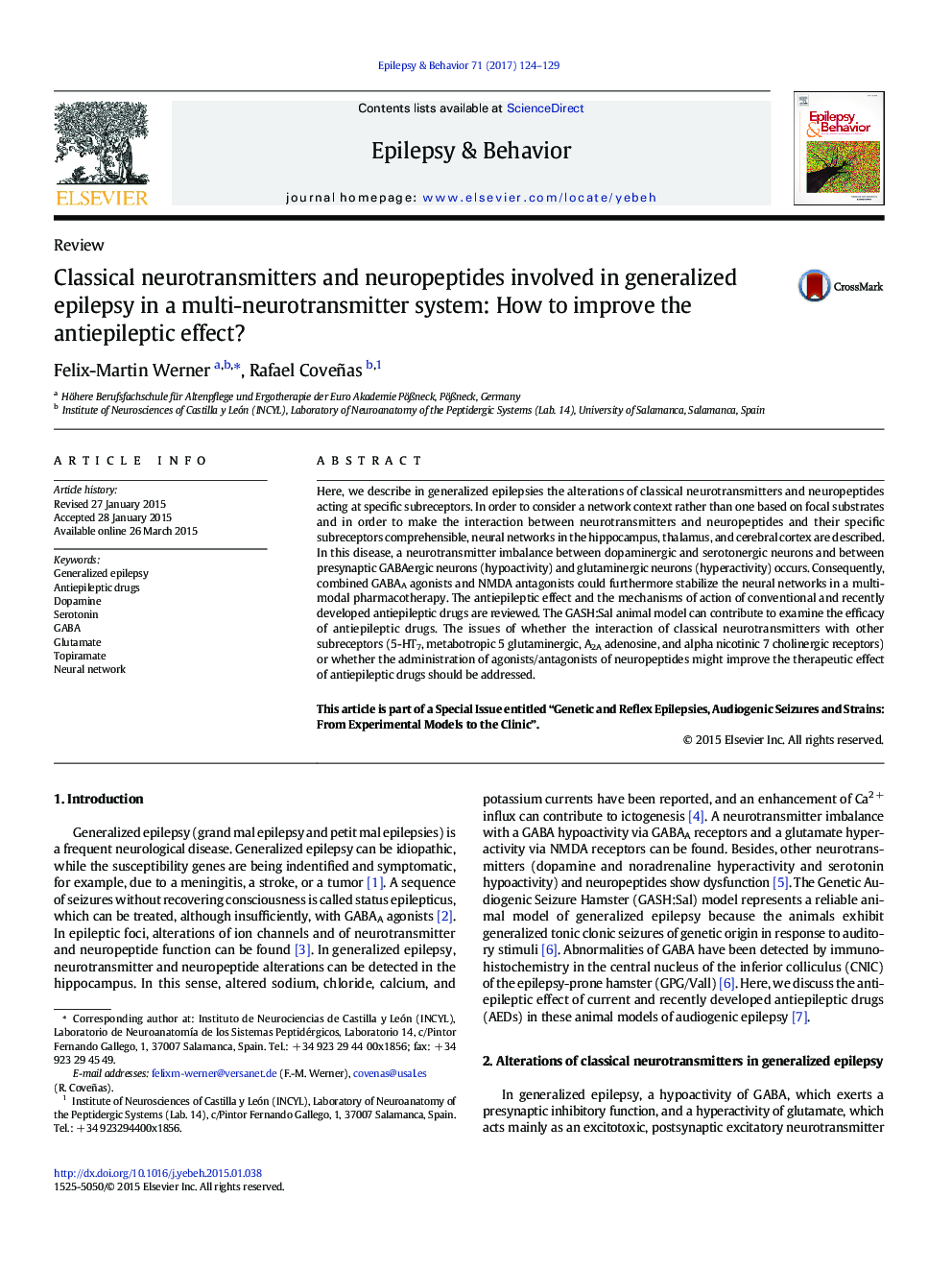| Article ID | Journal | Published Year | Pages | File Type |
|---|---|---|---|---|
| 5628431 | Epilepsy & Behavior | 2017 | 6 Pages |
â¢In the epileptic focus, an imbalance between hypoactive and hyperactive neurons occurs.â¢Glutamate neurons strongly inhibit 5-HT neurons and strongly activate Da neurons.â¢In the hippocampus, thalamus, and cerebral cortex, neural networks are described.â¢Combined GABAA agonists and NMDA antagonists should be developed.â¢The GASH:Sal animal model is suitable to examine the efficacy of AEDs.
Here, we describe in generalized epilepsies the alterations of classical neurotransmitters and neuropeptides acting at specific subreceptors. In order to consider a network context rather than one based on focal substrates and in order to make the interaction between neurotransmitters and neuropeptides and their specific subreceptors comprehensible, neural networks in the hippocampus, thalamus, and cerebral cortex are described. In this disease, a neurotransmitter imbalance between dopaminergic and serotonergic neurons and between presynaptic GABAergic neurons (hypoactivity) and glutaminergic neurons (hyperactivity) occurs. Consequently, combined GABAA agonists and NMDA antagonists could furthermore stabilize the neural networks in a multimodal pharmacotherapy. The antiepileptic effect and the mechanisms of action of conventional and recently developed antiepileptic drugs are reviewed. The GASH:Sal animal model can contribute to examine the efficacy of antiepileptic drugs. The issues of whether the interaction of classical neurotransmitters with other subreceptors (5-HT7, metabotropic 5 glutaminergic, A2A adenosine, and alpha nicotinic 7 cholinergic receptors) or whether the administration of agonists/antagonists of neuropeptides might improve the therapeutic effect of antiepileptic drugs should be addressed.This article is part of a Special Issue entitled “Genetic and Reflex Epilepsies, Audiogenic Seizures and Strains: From Experimental Models to the Clinic”.
Graphical abstractDownload high-res image (131KB)Download full-size image
